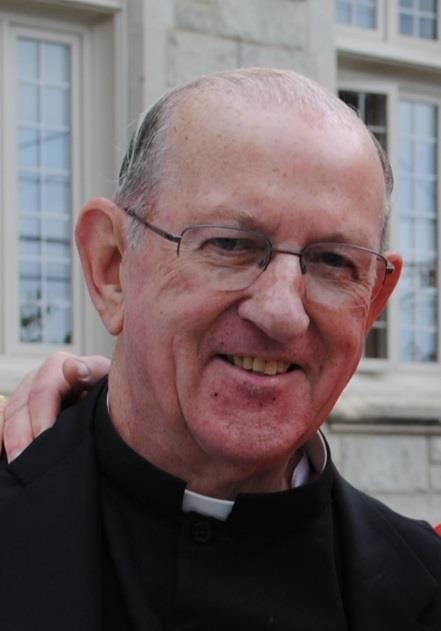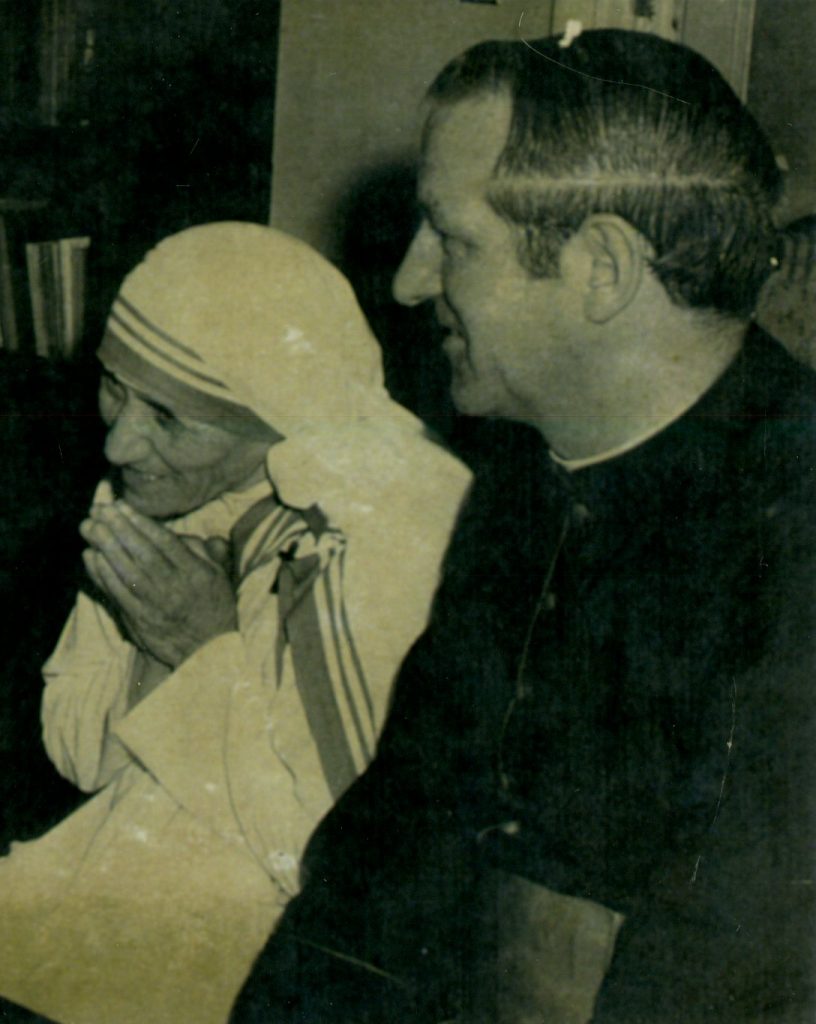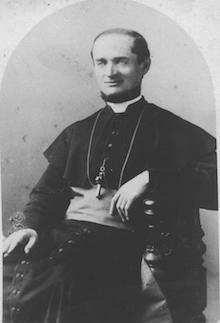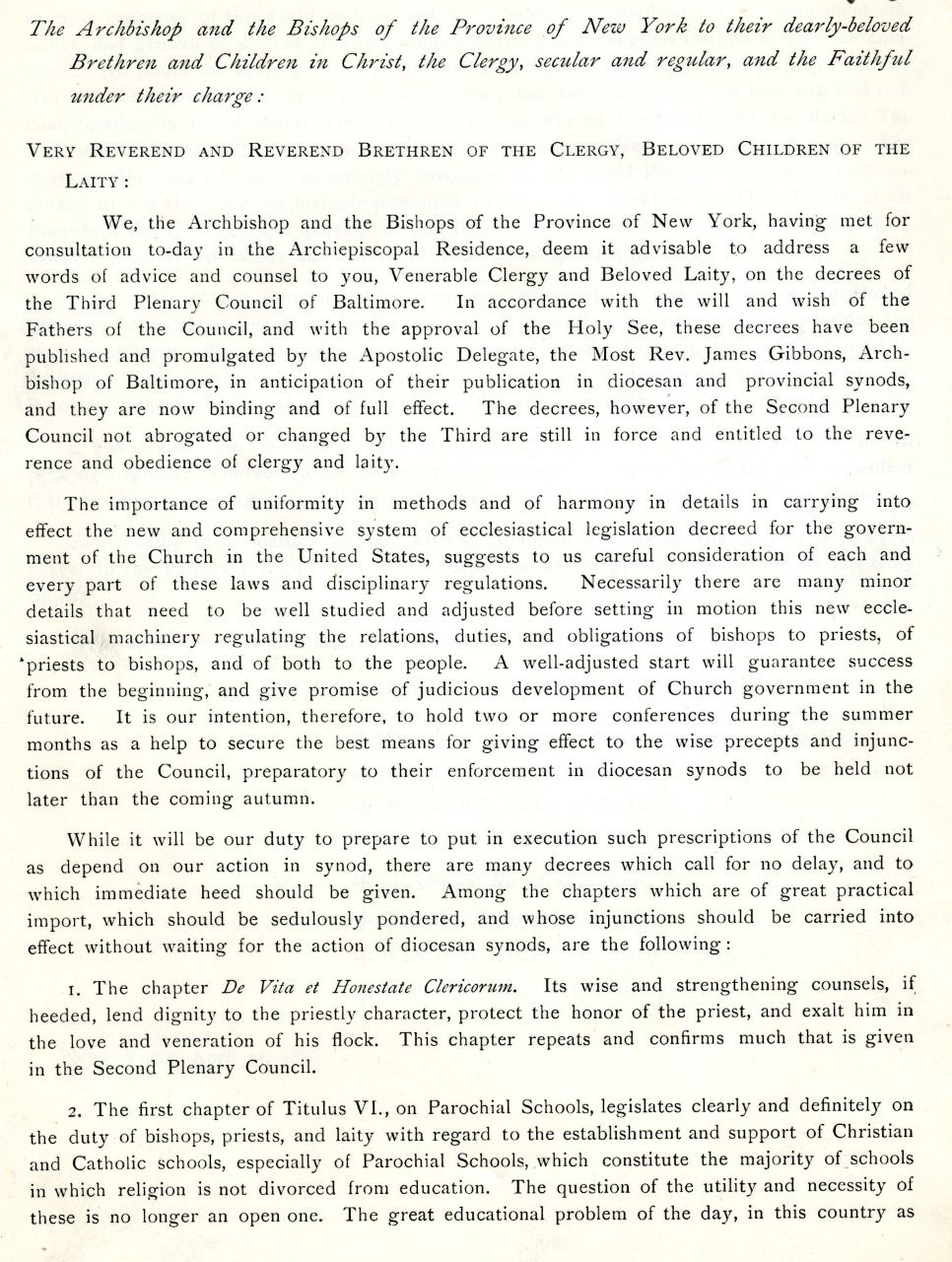November is National Black Catholic History Month and the Monsignor William Noé Field Archives & Special Collections Center honors this legacy by preserving long-term holdings and continually acquiring relevant resources in order to provide our research community with valuable primary source materials for consultation purposes year round. With this in mind, our Research Center celebrates the contributions of the three million plus African American Catholics on a national and local level alike in providing depth to this ongoing story that directly reflects upon our main collecting areas and research constituencies especially in this time of celebrating the importance of diversity.
The historical legacy of African Americans who adhere to the teachings of Catholicism within the United States has a proud history despite having to overcome obstacles to establish a respected presence within the Church. With this in mind, our Research Center celebrates the contributions of the three million plus African American Catholics on a national and local level alike in providing depth to this ongoing story that directly reflects upon our main collecting areas and research constituencies especially in this time illustrates the importance of diversity in all its forms.
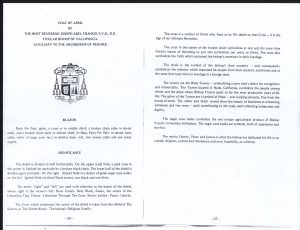
In specifically theological terms, African American faithful typically adhere to conventional Catholic doctrine. However, this often connects with ties to traditional and honored practices dating back to the days of Pre-Emancipation and beyond through the development of various African-based Protestant traditions that celebrated close community ties and sought to worship God while also promoting the need for combating prejudice and establishing wide-spread social justice among their congregants.
Black Catholics went on to attain a higher status with the USCCB pastoral letter of “Brothers and Sisters to Us” in 1978 along with the publication of various historical tracts including the trailblazing: The History of Black Catholics in the United States, by Rev. Cyprian Davis (New York: Crossroad, 1990) [BXZ1407.N4 D38 1990] along with others connected to this subject that can be found within our University Libraries Catalog from the Main Collection and/or Turro Seminary Library in particular. These two milestones combined with academic life and coursework linked to the Black Catholic Movement from the Late 1960s to the present has been beneficial to establishing understanding of the many spiritual and symbolic contributions made by African Americans within the Church as a whole.

Counted among our most relevant collections include the “Cause for Pierre Toussaint Collection” [MSS 0036] which reflects on one of the earliest and most notable Black Catholics who lived during the Early American Republic and lived by all accounts a holy and selfless life of service. As the abstract to this collection highlights: “Pierre Toussaint was born into slavery in 1766 in what is now Haiti. He moved with his family and master to New York where he lived until his death. He spent his life helping the sick, homeless, and orphaned. He died in 1853 (The year the Diocese of Newark was founded). The Pierre Toussaint Guild was created to advocate his induction into sainthood. His body was exhumed in November of 1990 as part of the investigation into the cause for his sainthood.”
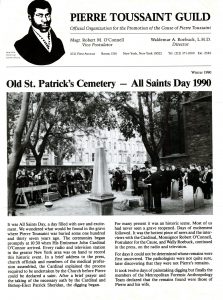
The Collection proper is broken down in the following manner within the Scope and Content Notes section: “This collection primarily consists of newspaper clippings describing the life and cause for sainthood of Pierre Toussaint, as well as photographs, correspondence, and mass cards related to Pierre Toussaint. Many of the news clipping focus on the exhumation of the Pierre Toussaint’s body in 1990. Photographs are generally reproductions of illustrations of Pierre Toussaint or of Jane Flores at places and events related to Pierre Toussaint.” More information on these Papers can be found via the following link: https://archivesspace-library.shu.edu/repositories/2/resources/203

In addition the New Jersey Catholic Historical Commission (NJCHC) has various resources that have been written and maintained by membership over the years. From various publication extracts to NJCHC symposium data for “New Jersey’s Black Catholic Heritage: Discovering Our Past in the Present” (January 31, 1991). The link to this organizational homepage can be found via the following site: http://blogs.shu.edu/njchc/ Specific examples include back issues of the NJCHC available in full-text pdf form including the following issues:
NJCHC Newsletter – https://scholarship.shu.edu/njchc/24/
New Jersey Catholic Records Newsletter, Vol. 9, No.3
New Jersey Catholic Historical Commission
Document Type – Newsletter, Publication Date – Summer 1990
Abstract – The “Birth of Christ The King Parish, Jersey City” looks at some of the first establishments of African-American Catholic parishes in the Diocese of Newark. https://scholarship.shu.edu/njchc/22/
New Jersey Catholic Records Newsletter, Vol. 10, No.2
New Jersey Catholic Historical Commission
Document Type – Newsletter, Publication Date – Winter 1991
https://scholarship.shu.edu/njchc/34/
New Jersey Catholic Records Newsletter, Vol. 10, No.3
New Jersey Catholic Historical Commission
Document Type – Newsletter, Publication Date – Spring 1991
https://scholarship.shu.edu/njchc/37/
New Jersey Catholic Records Newsletter, Vol. 13, No.2
New Jersey Catholic Historical Commission
Document Type – Newsletter, Publication Date – Winter 1994
https://scholarship.shu.edu/njchc/36/
New Jersey Catholic Records Newsletter, Vol. 13, No.3
New Jersey Catholic Historical Commission
Document Type – Newsletter, Publication Date – Spring 1994
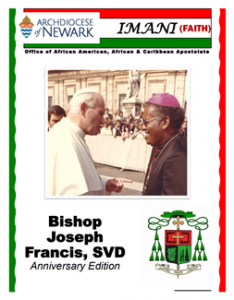
Another figure connected to the NJCHC, but to the Archdiocese of Newark in particular is the first African American prelate for the See, Most Rev. Joseph Francis, SVD (1923-1997) who was made an Auxiliary for the Archdiocese of Newark in 1976 and retired in 1995 had a lasting impact on the spiritual impact on the Northern New Jersey community and beyond. More information on his life and activities can be found within the following published compilation published by the Archdiocese of Newark . . . https://www.rcan.org/sites/default/files/files/Newsletter%2C%20Bishop%20Francis%20Edition(1).pdf
Other important sources of note include, but are not limited to various Seton Hall-related resources (going back to c. 1912), but other Special Collections (including ones that require permission to review) can be found via the link to our ArchivesSpace site catalog can be found here . . . https://archivesspace-library.shu.edu/
In addition, the University Libraries Catalog features the following titles in relation to the wider African American Catholic experience . . . https://setonhall.on.worldcat.org/search?clusterResults=off&queryString=african+american+and+catholic and the search sequence of Black Catholic(s) . . . https://setonhall.on.worldcat.org/search?databaseList=283&queryString=black+and+catholic&clusterResults=false In addition, here are specific titles covering the African American Catholic community and Newark . . . https://setonhall.on.worldcat.org/search?databaseList=283&queryString=african+american+and+catholic+and+newark&clusterResults=false
Within the University Libraries Homepage is a Research Guide Section that also ties into key documents that highlight and explain African American Catholic highlights from the Vatican and other important resources in general and particular . . .
https://library.shu.edu/collections-guide/african-american-studies
For more information related to African American/Black Catholics found within our repository and research resources in general can be requested and research appointments scheduled by reaching out to us via e-mail: Archives@shu.edu or by phone at: (973) 275-2378.
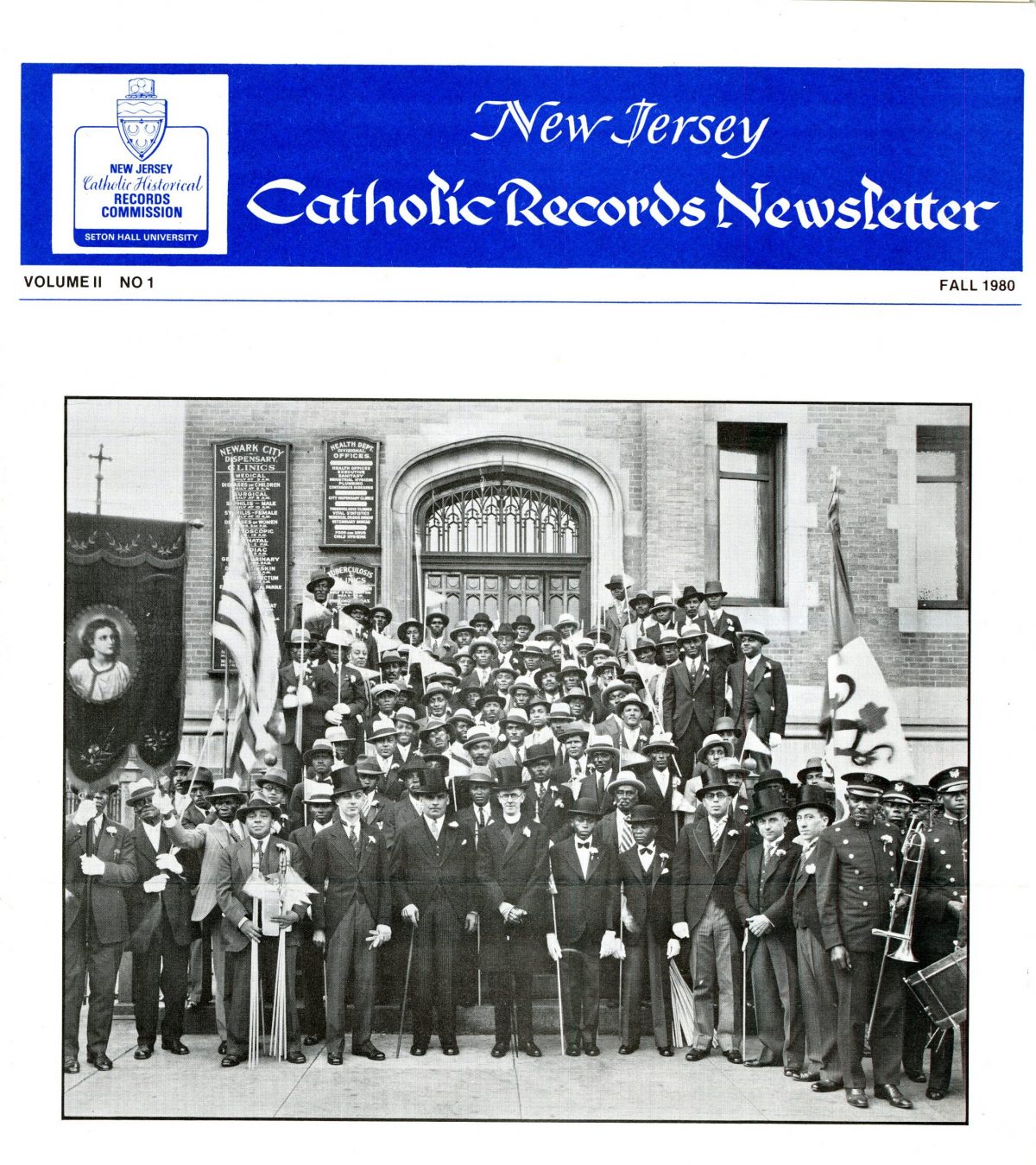

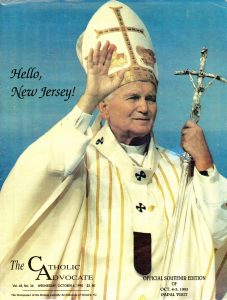
 The morning of October 5th Pope Saint John Paul II celebrated Mass at Giants Stadium in East Rutherford before 85,000 individuals where Pope Saint John Paul II in his homily expressed those present and millions watching on television that “Today we are celebrating the Good News of God’s Kingdom here in Giants Stadium, in the Archdiocese of Newark in New Jersey – ‘The Garden State’ . . . “ which was greeted with enthusiastic applause. Moreover, he reminded the assembly of the ways in which the church has “made a home” in this country, embracing people of many different cultural and ethnic backgrounds. Pope Saint John Paul II delivered his sermon during an unforeseen downpour in which he quipped to the assemblage that: “I see the people of New Jersey know how to praise God in joyful praise and song, even in the rain.” . . . “water drenched faithful that “water is a sign of life, a sign of God’s blessing!” This provided a graceful note upon which to end the ceremony and inspire the crowd.
The morning of October 5th Pope Saint John Paul II celebrated Mass at Giants Stadium in East Rutherford before 85,000 individuals where Pope Saint John Paul II in his homily expressed those present and millions watching on television that “Today we are celebrating the Good News of God’s Kingdom here in Giants Stadium, in the Archdiocese of Newark in New Jersey – ‘The Garden State’ . . . “ which was greeted with enthusiastic applause. Moreover, he reminded the assembly of the ways in which the church has “made a home” in this country, embracing people of many different cultural and ethnic backgrounds. Pope Saint John Paul II delivered his sermon during an unforeseen downpour in which he quipped to the assemblage that: “I see the people of New Jersey know how to praise God in joyful praise and song, even in the rain.” . . . “water drenched faithful that “water is a sign of life, a sign of God’s blessing!” This provided a graceful note upon which to end the ceremony and inspire the crowd.




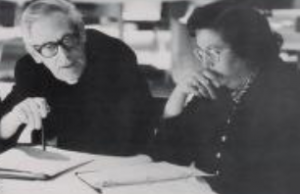

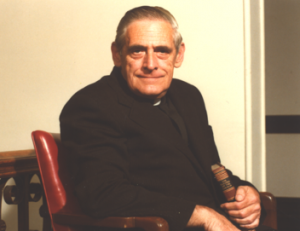 Additional postings regarding the life and legacy of Monsignor Fahy will be forthcoming. In the meantime, please feel to contact us if you need further information on Monsignor Fahy and all aspects of Seton Hall University. We can be reached via e-mail at:
Additional postings regarding the life and legacy of Monsignor Fahy will be forthcoming. In the meantime, please feel to contact us if you need further information on Monsignor Fahy and all aspects of Seton Hall University. We can be reached via e-mail at: 